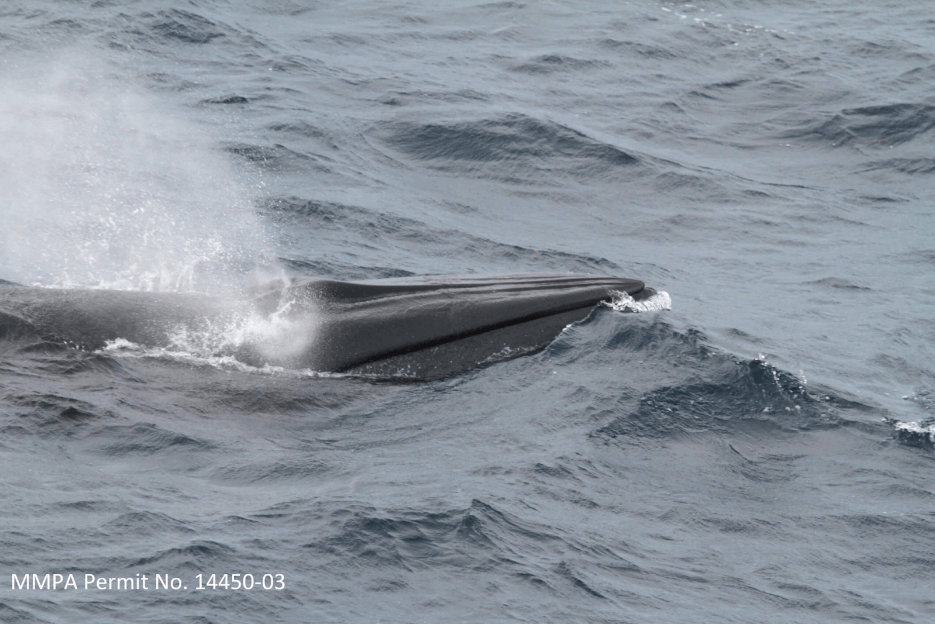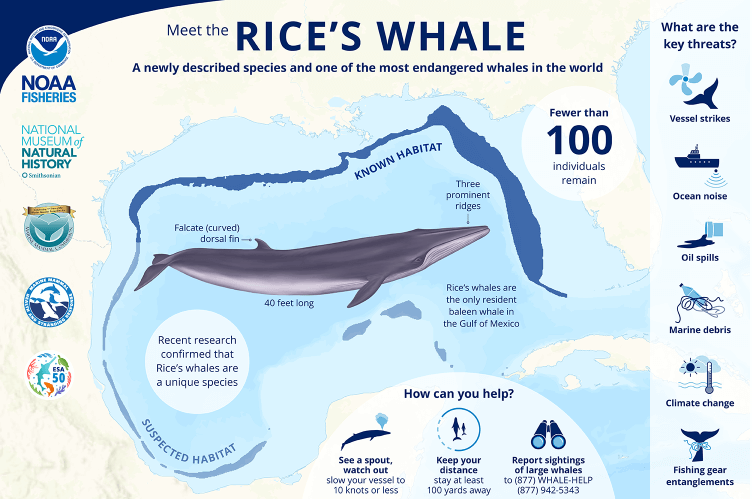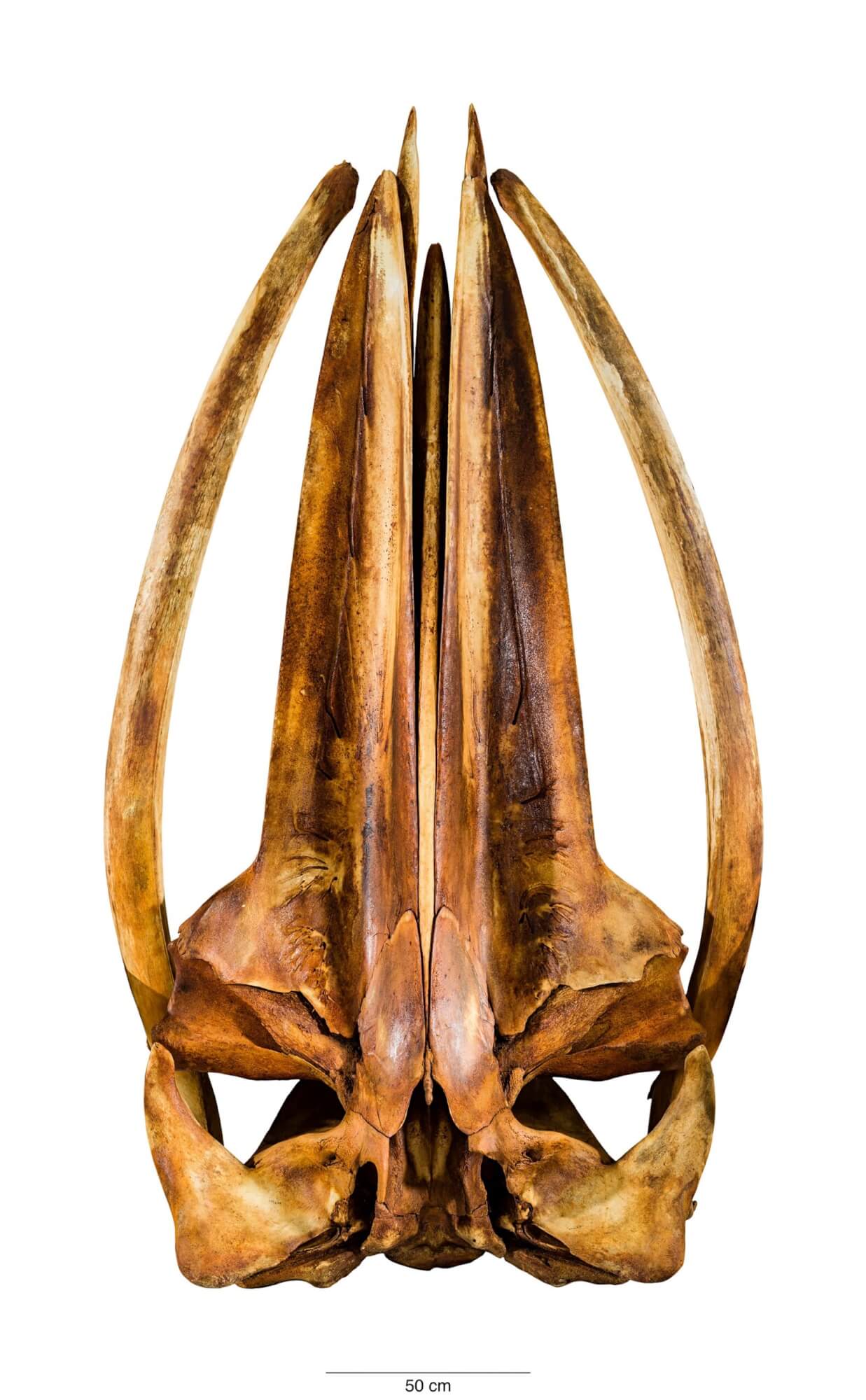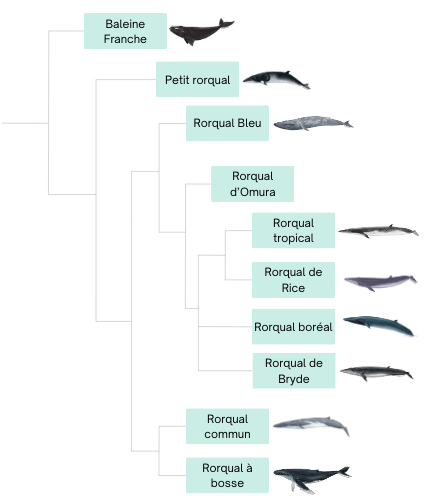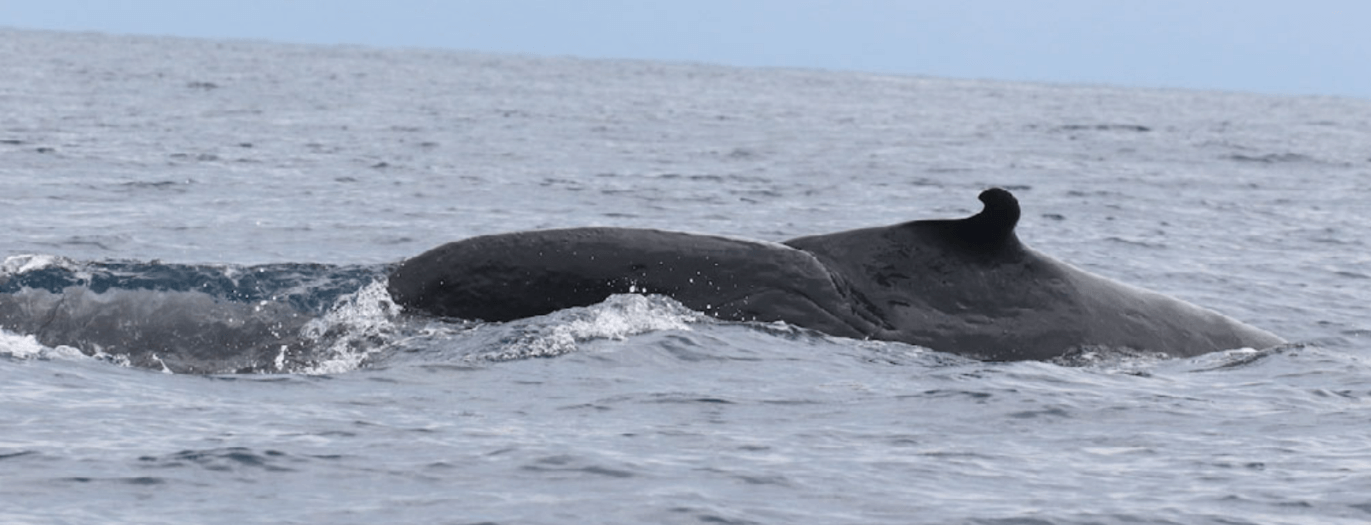Though only discovered in 2021, the Rice’s whale (Balaenoptera ricei) is one of the most endangered whales in the world. Recent estimates put the population at fewer than 75 individuals.
A well-deserved introduction
Rice’s whale gets its name from American cetologist Dale W. Rice, who was the first person to identify the presence of Bryde’s whale in the Gulf of Mexico in 1965. This new baleen whale species can measure up to 12.65 metres and weigh up to 27 metric tonnes. Along with Bryde’s whales, Rice’s whale is the only rorqual to have three ridges on its rostrum. It presents countershading in which their coloration is dark grey on top and pale pinkish underneath. The whale’s body is streamlined, the dorsal fin curved and pointed, and it features a large smooth-edged fluke.
Rice’s whale is the only year-round resident baleen whale in the Gulf of Mexico. It resides mostly in the continental shelf break in the northeastern part of the gulf in depths of between 100 and 400 metres. Little is known about the life cycle of this species. Based on research on the closely related Bryde’s (pronounced “BROO-dus”) whale (Balaenoptera brydei), it is estimated that Rice’s whale reaches sexual maturity at the age of 9, and is able to reproduce every 2 to 3 years. Rice’s whales are selective predators, consuming schooling prey with the highest energy content.
A complex family tree
For years, Rice’s whale was believed to be a Bryde’s whale, due to the physical similarities of the two. Only recently has the former been classified as a separate species. The ‘Bryde’s whale complex’ includes several whale species whose relationships remain somewhat unresolved. The complex includes the common Bryde’s whale (Balaenoptera edeni brydei), Eden’s whale (Balaenoptera edeni edeni), and, until recently, Omura’s whale (B. omurai) and Rice’s whale (B. ricei).
The decision to name a new species came from a study published in 2021 that examined the morphological differences between the skulls of the four whales that comprise the Bryde’s whale complex. The main physical difference is that the nasals taper and curve laterally towards the back and have a smooth margin in Balaenoptera ricei. There is also a large gap between the nasal bones that does not narrow posteriorly. The frontal bones also protrude anteriorly between the posterior end of the nasals.
This study also used the genetic data from a previous paper from 2014 that compared the genome of the species included in the Bryde’s whale complex. Though it had not yet been decided that Rice’s whale was a distinct species, the researchers’ findings contributed to this discovery. The scientists found that the “Bryde’s whales of the Gulf of Mexico” showed very low levels of genetic diversity and were genetically distinct from all other members of the Bryde’s whale complex.
A species under the lens
A recent study aiming to describe the whale’s critical habitat and key environmental features found that Rice’s whale depends on a complex physical oceanographic environment. The shelf break is characterized by low temperatures and high salinity, which allows for upwellings that are useful for the nutrient cycle. This creates a nutrient-rich environment that is home to considerable biodiversity, including the silver-rag driftfish, the main food source for Rice’s whale.
NOAA Fisheries’ RESTORE Science Program has also been instrumental in gaining a better understanding of Rice’s whale. The organization’s Gulf of Mexico Rice’s whale Trophic Ecology Project attempts to answer many questions. Thanks to photo-identification, the first catalogue for the species has been created based on 33 whale sightings, with some individuals having been observed for over 15 years. Satellite tags have been used to better understand the species’ behaviour. Other measures used by researchers include collecting biopsy samples and environmental DNA (eDNA) as well as characterizing prey type and distribution. This work is important to inform conservation decisions and develop management plans.
Main threats
Until recently, it has been difficult to identify the key threats and issues facing Rice’s whale. Due to the Bryde’s whale complex, there is little information on the species in the Gulf of Mexico. Today, Rice’s whale is protected by the Endangered Species Act(ESA). The species is also classified as critically endangered by the IUCN.
Despite its new status, Rice’s whale still faces many dangers. One of the main threats that Rice’s whale faces is from the Deepwater Horizon oil spill in 2010. A 2015 report found that 48% of the whale’s habitat was affected by the spill and that there was a 22% decline in the size of the post-spill population. The report estimates that it will require 69 years for the population to recover. The oil spill resulted in numerous negative health effects that affected 18% of the population and caused reproductive failure in many females. Restoration plans are in place, but there is still much to be done.
Other threats present in the Gulf of Mexico include the elevated risks of vessel strikes, anthropogenic noise disturbance, energy exploration, high levels of pollutants and contaminants, entanglement in fishing gear, and the effects of climate change on the whale’s prey.
Conservation has never been easy
The Bureau of Ocean Energy Management (BOEM) has issued recommendations to protect the Rice’s whale and its critical habitat. The main recommendations include stricter monitoring of the strike avoidance zones, speed restriction in the Rice’s whale area, maintaining a distance of 500 m from the endangered whale, and more. NOAA has also proposed a rule to designate the critical habitat for Rice’s whale, which would cover 28,270.65 square miles (more than 73,000 km2) of the continental shelf in the Gulf of Mexico.
Unfortunately, opinions on the proposed measures differ. In a letter dated May 1st, several individuals expressed their disapproval of the new regulations on the grounds that they “lack sound scientific backing.” In cases like these, it is important to remember that the species was only recently discovered, and that knowledge is limited.
Due to its recent discovery, not much is known about Rice’s whale, meaning that opportunities for research are as vast as the ocean itself. Those who dare to venture are sure to find a treasure of new and interesting information.


